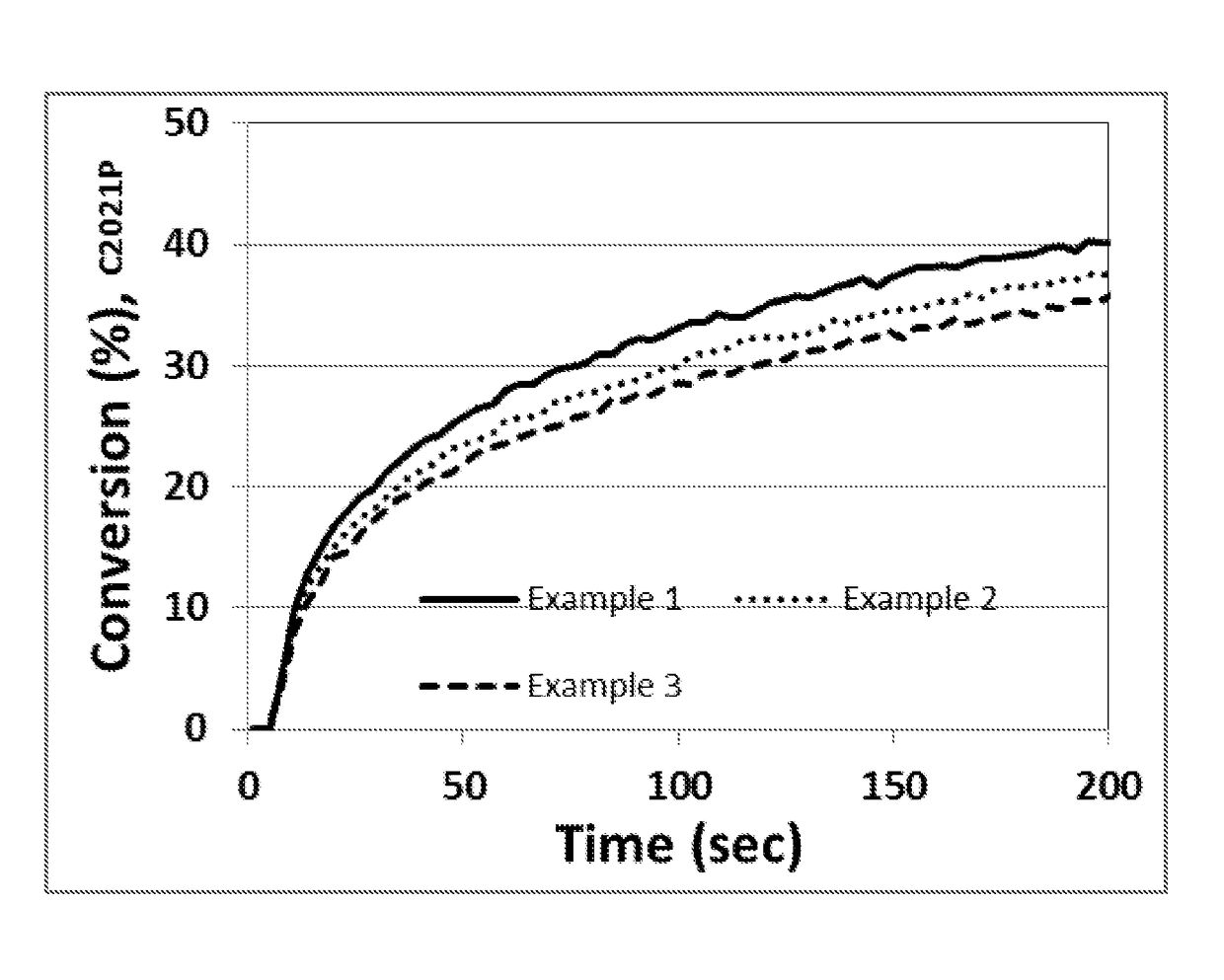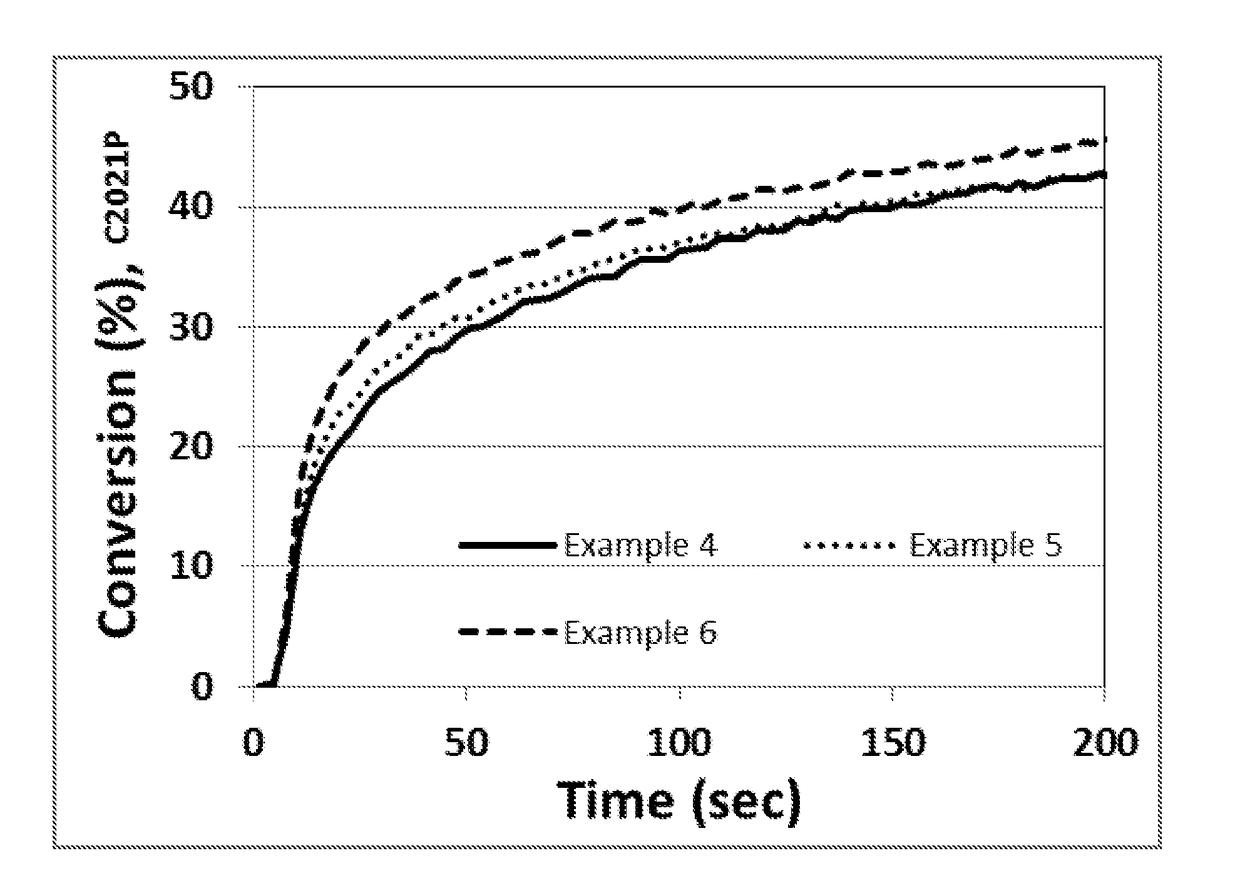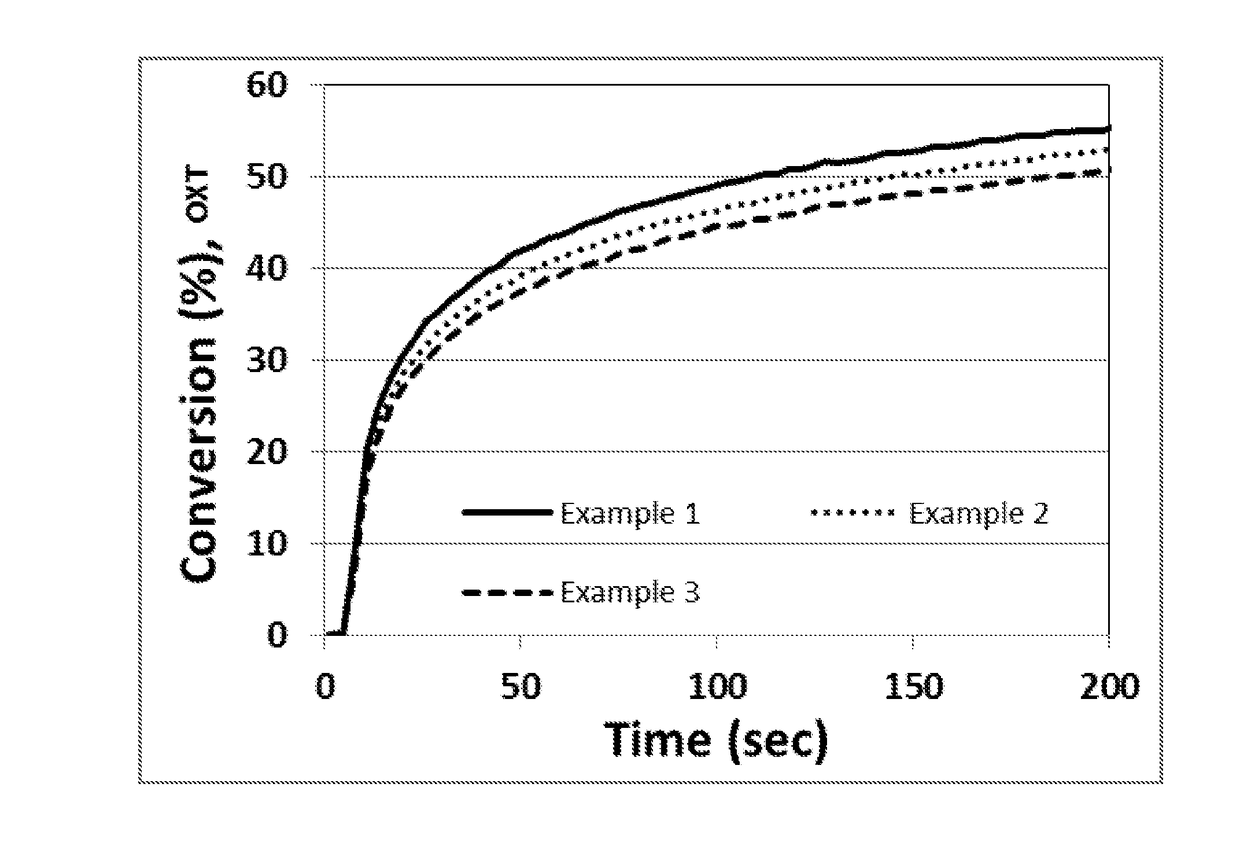Improved antimony-free radiation curable compositions for additive fabrication, and applications thereof in investment casting processes
a technology of additive fabrication and liquid radiation, which is applied in the direction of manufacturing tools, foundry patterns, moulding apparatus, etc., can solve the problems of reducing the amount of curing that occurs during object creation, generating excess heat, and limited output power of additives
- Summary
- Abstract
- Description
- Claims
- Application Information
AI Technical Summary
Benefits of technology
Problems solved by technology
Method used
Image
Examples
examples
[0133]These examples illustrate embodiments of the liquid radiation curable composition for additive fabrication of the instant invention. Table 1 describes the various components of the liquid radiation curable composition for additive fabrication used in the present examples.
TABLE 1Function inSupplier / ComponentFormulaChemical DescriptorManufacturerEPONOX 1510CationicallyHydrogenated Bisphenol AEPMpolymerizabledigycydylether epoxycomponentOXT-101Cationically3-Hydroxymethyl-3-ethyloxetaneTOAGOSEIpolymerizablecomponentIrgacure 184Radical1-Hydroxy-1-cyclohexyl phenylBASFPhotoinitiator ketoneEbecryl 3700RadicallyBisphenol A diglycidyl etherAllnexpolymerizablediacrylatecomponentChivacure BMSPhotosensitizer4-Benzoyl-4′-methyl diphenylChitechsulphideCPI300PGAntimony-free50% triarylsulfonium salt withSanAprosulfonium saltfluoroalkyl-substitutedcationicfluorophosphate anion (CAS 108-65-photoinitiator6) + 50% propylene glycolmomomethyl ether acrylatePAG-290Antimony-free20% triarylsulfonium s...
examples 1-6
[0134]Various filled liquid radiation curable resins for additive fabrication were prepared according to well-known methods in the art, employing a hybrid cure photoinitiating package, a cationically polymerizable package, a radically polymerizable package, and in select instances (where noted) a photosensitizer. The specific compositions are reported in Table 2 below.
[0135]These samples were then tested according to the methods for conversion of the cycloaliphatic epoxide and oxetane components, as detailed below. The results are presented in Table 3 and FIGS. 1-4 below.
Cure Speed—FTIR Test
[0136]To measure polymerization rate (cure speed) of each example, a Real Time Fourier Transform Infrared (FTIR) spectroscopy was used. To increase the data acquisition frequency as well as resolution, a mercury cadmium telluride (MCT) detector was used. Instead of the transmission mode, the Attenuated Total Reflection (ATR) setup was used. All polymerization rate measurements were performed usin...
PUM
| Property | Measurement | Unit |
|---|---|---|
| Fraction | aaaaa | aaaaa |
| Fraction | aaaaa | aaaaa |
| Fraction | aaaaa | aaaaa |
Abstract
Description
Claims
Application Information
 Login to View More
Login to View More - R&D
- Intellectual Property
- Life Sciences
- Materials
- Tech Scout
- Unparalleled Data Quality
- Higher Quality Content
- 60% Fewer Hallucinations
Browse by: Latest US Patents, China's latest patents, Technical Efficacy Thesaurus, Application Domain, Technology Topic, Popular Technical Reports.
© 2025 PatSnap. All rights reserved.Legal|Privacy policy|Modern Slavery Act Transparency Statement|Sitemap|About US| Contact US: help@patsnap.com



